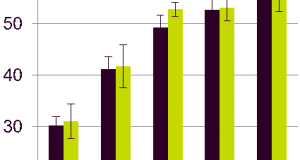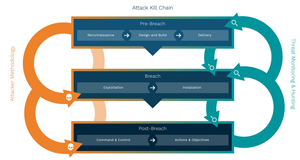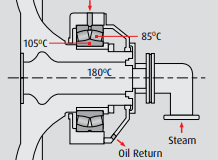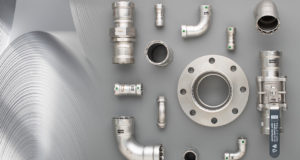Smart Strategies for Pulp Mill Optimization: Take Care of ESP Fundamentals
SPONSORED CONTENT BY NEUNDORFER

Like any complex system, a pulp mill is only as strong as its weakest link. The challenge for teams is how to build intelligent optimization and maintenance strategies that check all the boxes from an engineering and equipment perspective.
When that happens in the right way, mills can stretch to meet changing production and business goals while maintaining and even extending their commitment to environmental stewardship and sustainability.
The alternative is costly repairs and bottlenecks in a reactive rather than a proactive environment. Given the realities of today’s paper industry, anything done reactively means lost production time and potential lost investment.
The key to doing things right is choosing partners with the knowledge and ability to understand the mill as a system and fit needed improvements seamlessly into overall business operations in a timely manner.
At a large integrated paper mill in the Upper Midwest, a plant manager and his team faced such a choice in 2020 as they prepared for their annual summer outage. They saw opacity numbers rising in effluent discharge from the mill’s recovery boiler electrostatic precipitator (ESP).

After an attempt to improve opacity control during the 2020 outage did not deliver the expected results, the team chose Neundorfer to spearhead another try in 2021. Neundorfer’s highly accurate fluid dynamics modeling produced an effective opacity solution that enabled the mill to continue to operate under its current permit limits.
And as the facility prepared to expand capacity during its strategic outage scheduled for summer 2022, it retained Neundorfer as its ESP provider to plan a significant power upgrade.
“We’re always looking to increase production and improve efficiency, and we’ve been very successful in doing that over the years,” the plant manager said. “Neundorfer brought in a diverse team of engineering, maintenance, and operations people to ensure our needs are met from start to finish.”
An Opacity Issue Emerges
At the heart of the recovery boiler emissions control system, the ESP is responsible for pulling particulate matter out of the gas waste stream for collection and eventual energy reuse.
As gasses exit the recovery boiler, they enter the ESP, which removes particles from the gas stream by using electrical energy to charge particles either positively or negatively. The charged particles are then attracted to collector plates carrying the opposite charge. If all works well, an ESP performs at 99% efficiency or greater.
ESPs are essential in many manufacturing industries, including electric power, cement, chemicals, metals, and paper. Neundorfer serves customers in all those sectors, providing maintenance, operational support, and troubleshooting for ESP control systems, power supplies, and internal components.
In the paper industry, environmental permits govern ESPs, mandating an opacity limit for particulate emissions. The problem is that inefficiencies can build over time.
That’s the situation the team at the mill in the Upper Midwest began to experience in 2020. Using a continuous emission monitoring system, the team observed rises in production inefficiencies that threatened to restrict its options moving forward.
Deviations in optimal gas flow across the collection plates, known as “channeling,” contribute to inefficiency rises. So do fluctuations in the amount of power funneled to the system through its transformer rectifiers, which produce the voltage necessary for particle charging.
The team needed to improve ESP performance before the plant began to bump up against its opacity limit. The vendor they chose observed channeling in the ESP, but its remedy for redistributing the flow did not improve the numbers. The mill team had no choice but to go back to the drawing board.
Accurate Fluid Dynamics Modeling
Neundorfer applies extensive training and experience to understand each customer’s unique challenges and objectives. Its holistic approach considers environmental and operational goals to identify efficiencies and profit opportunities.
Ductwork from the recovery boiler channels flue gas to the ESP. Entering the ESP, under optimal conditions, the gasses expand outward in an orderly manner like water flowing into an open drainage area. The objective is to get the gas flow to distribute so that the collection area in the ESP is maximized.
The original vendor at the mill had installed fins in the ducts to redirect the flow in the ESP, and the mill manager and his team understood that channeling was an issue as the 2021 outage approached. They needed a more effective analysis using state-of-the-art diagnostic tools.
As the team performed its selection due diligence, it prioritized a solutions provider with engineering and equipment capabilities. It wanted a partner with values of integrity, inquiry, and ingenuity, with a willingness to leave no stone unturned and the dedication to see a challenge through to success.
It also wanted a partner that could bring real-world knowledge to solving its ESP problem per its objectives and intent. With more than 47 years of experience, Neundorfer rose to the forefront through its sophisticated in-house modeling capabilities, which incorporate concepts in computational fluid dynamics and integrate 3D graphic design technology and performance prediction capabilities.
The results exceeded expectations, with Neundorfer producing a highly accurate assessment of ESP flow inefficiencies at the mill and a plan for revising the ductwork. Its willingness to dig into operational details and facilitate knowledge exchange also enabled it to fully explain the reasons behind its recommendations, building long-term credibility.
Not everything was perfect at the outset — both parties needed to manage a significant startup and learning curve. But Neundorfer went beyond the transaction in its service delivery, working strategically with the mill team to produce the projected results.
Preparing for the Future
That set up the new working relationship for 2022. The mill had provided process data, drawings, and details around the operation of its ESP for 3D modeling and testing purposes. Neundorfer’s analysis pinpointed the uneven flow distribution and channeling and led to successful ductwork modifications. Now it was time to use the insights gained from those experiences to clear the way for a planned production increase after the mill’s 2022 summer outage.
Neundorfer uses a sophisticated ESP performance model to help identify the most cost-effective solutions. Inputs from process data, ESP data and the computational fluid dynamics modeling help determine the best solutions. The analysis showed that the cleaner post-2021 system needed additional power capability to take full advantage of its potential. The mill had received a revised environmental permit to accommodate the production increase, and Neundorfer’s work would support it. The partners looked at power generation, including the transformer rectifiers, to accomplish the goal.
In the ESP, transformer rectifiers (T/Rs) provide the power to the electrodes. They issue the electrical charge that then charges the particulate and prepares it for collection. ESPs require a lot of power, but, in some circumstances, more power is necessary, such as with an increase in the effluent to the ESP.
T/Rs are vital to the operational reliability and efficiency of ESPs. Over time, ESP performance deteriorates due to causes such as dust build up, changes in process conditions or mechanical issues that drive average voltages down.
When this happens, opacity trends upward, necessitating a pullback on liquor firing to remain compliant. Neundorfer’s modeling identified that the ESP would need more power and served as the basis for a plan to get the most out of the ESP with an aggressive powering scheme.
In the meantime, the mill instituted a Neundorfer preventative maintenance plan for its ESP. Reliability improved tremendously due to Neundorfer’s inspection/repair work and recommendations.
Working Together to Engineer Solutions
With new mill construction moribund for decades in the U.S., the 2020s look like a time for doing more with less. Neundorfer’s Upper Midwest mill customer may be typical in that regard. Its foundation is in 1980s technology, but its goals are future-focused.
It helps when mills choose partners primed to adapt and embrace change. Although Neundorfer is proud of its 47-year legacy, it recognizes that driving 21st-century results requires 21st-century methodologies.
It is a specialist in air quality control and ESP optimization, but its experienced team develops a unique solution for every customer because circumstances warrant it. It draws on various skill sets and considers multiple stakeholder interests to ensure that emissions controls aren’t the weak link in the production process.
In that light, it’s important to remember that mills, like all things, are built by the lowest bidder. For mills constructed in the 1970s and 80s, sustainability standards have tightened, and production expectations have increased. Today, it’s all about improving as efficiently and effectively as possible.
Back at the mill in the Upper Midwest, there was no second-guessing as the 2022 outage approached and the time drew near to put plans into action. The plant manager and his team continued to value their partnership as Neundorfer representatives paid in-person visits to the mill.
“Even their president, Steve Ostanek, came out during the planning for this power project,” the plant manager said. “Throughout all levels of the organization, they’ve been an engaged, strategic partner, committed to working very closely with us and standing behind what they do.”
Visit Neundorfer on the web to learn more about what it can do to improve pulp and paper mill air quality and emissions. Email solutions@neundorfer.com or call 440-942-8990 to start a conversation.




